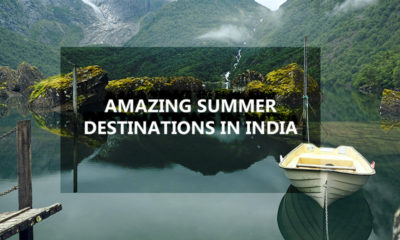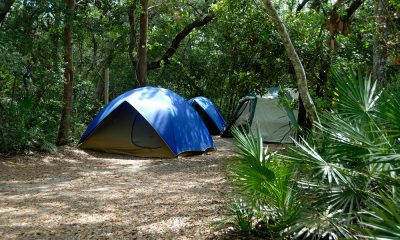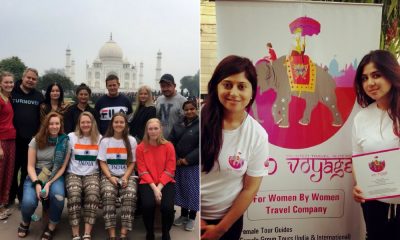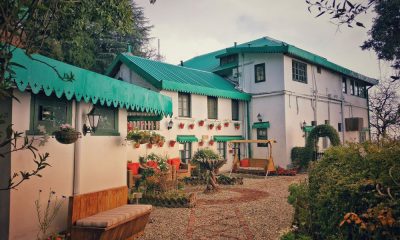Living
SaveAGram: Instilling A Sense Of Pride
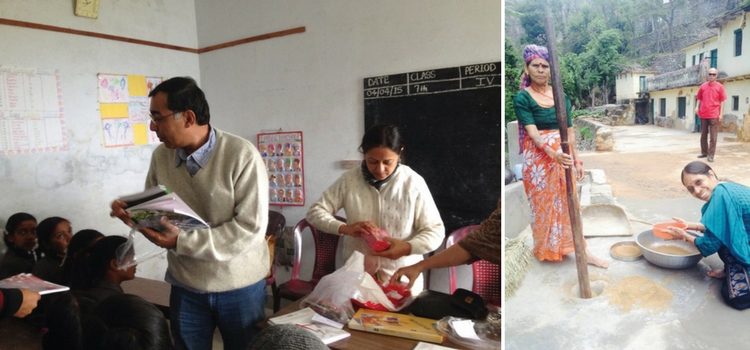
Through her social enterprise SaveAGram, Amala Menon is crusading to raise the self-esteem of villagers in India, one village at a time
Text Credits: Charishma Thankappan Image Credits: SaveAGram
Picture this. Walking down the river Kabini and across the tribal fields; sitting down at earthen fire kitchens and flattening a ball of rice dough to make Ari Pathal; cupping your palms to a vine that when chopped, gives pure drinking water. These may sound like some of the most exotic experiences, but it would surprise you to know, that they are part of the quotidian routines of some of the village folk from our own land. And bringing these experiences in their truest forms to the city folk is SaveAGram, an organisation started by Amala Menon.
Born in 2014, SaveAGram is a social enterprise aimed at providing villagers with a stable income through shared culinary and living experiences. It offers a unique chance to live the local lifestyle while enjoying homemade meals and indulging in a range of activities the region offers (think hiking, a dose of yoga, rustic homes and ancient dance forms) and waking up in traditional village homes. Amala explains the system’s vision-mission statement, “To try and provide income streams to villagers, we leverage on their existing sustainable practices. With the income, we also try to improve their sense of self-esteem and sense of pride in who they are. Income generation can be done by anybody by just employing them, but that doesn’t empower them.”
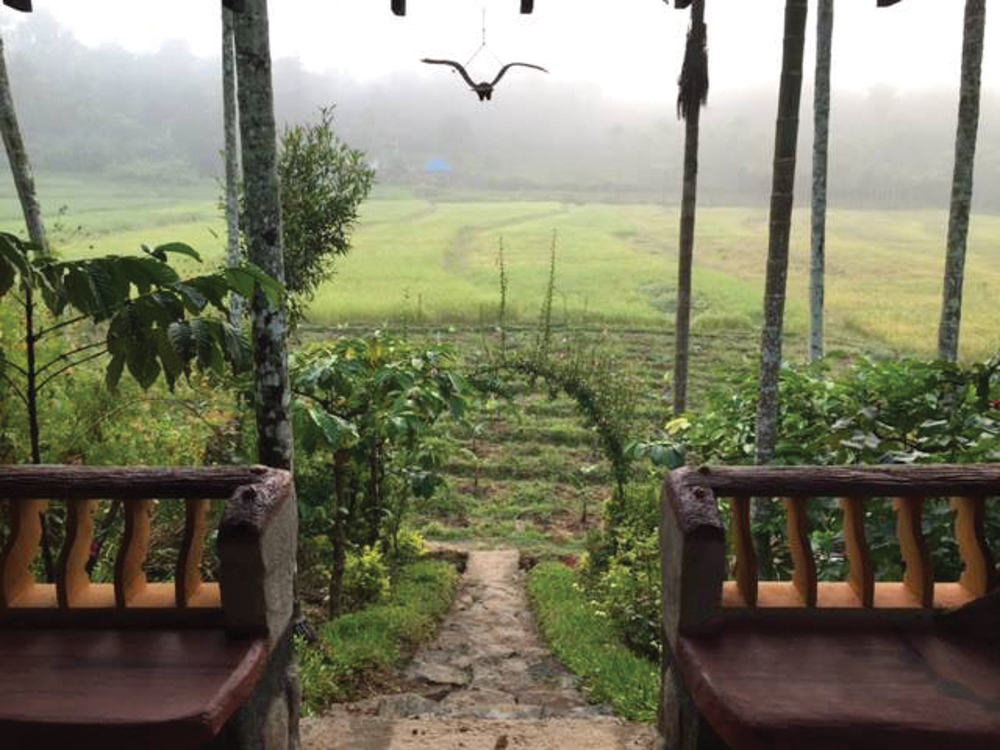
It is the need for better income that pushes villagers to live in the cities and live in poor surroundings, compared to the scenic villages that they have, says Amala. “Once during a landslide in the Himalayas, we were forced to go and stay in one of the villagers’ home. I was not very comfortable initially, as I have been living in Singapore and had a sense of clinical cleanliness. We had to climb up to reach the house, and upon reaching the top, a spectacular view of the Himalayas greeted me and I was sold. I wondered why people left such beautiful places to go and live in the cities. I also saw that they are also almost as clinically clean as Singaporeans. They broom their angans at least three times a day!”
Amala, who used to work in the corporate sector till 2012, started doing recces in the Himalayas in 2013 and finally registered her company in 2014. “I never wanted to do charity or be an NGO. I wanted an organisation that is profitable, and the profits generated have to be churned back into developing the institution. So that is how we started SaveAGram, and we started in a village in Garhwal.”
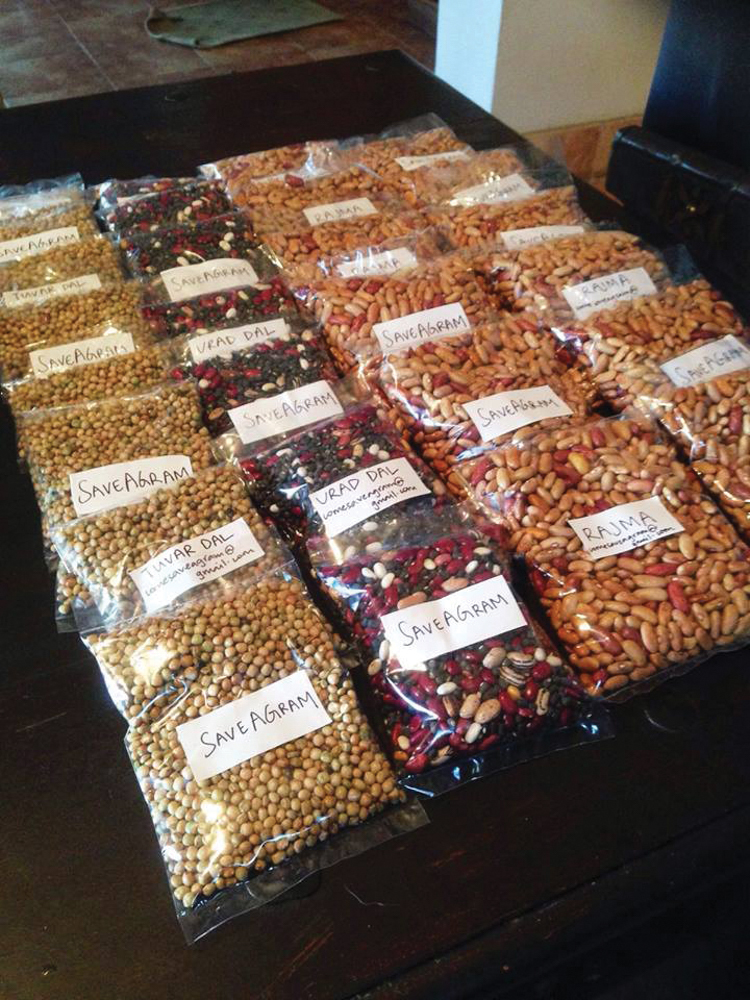
Finding a home was a big challenge, she says, as it had to be a place that attracts people. “Sometimes a home is owned by three-four people as it is passed down generations, as these homes are over a 100 years old. Each room belongs to different members of the family so you have to get their consent and sign a document. These are villages which are not accessible by road, so you have to trek up to them, and there’s not a single shop there.”
She later expanded to Wayanad, which is accessible by road, but one still needs to walk to the farmer’s house. “I didn’t want pollution and traffic,” she reasons. “But by my second visit after I went to see the place the first time, the person had cut a mud road for us, and I was so upset and asked him why he had done it as I wanted it to remain as it originally was.”
Amala doesn’t intend to make a homestay out of all the families in the particular villages. “I encourage them to be a guide, a driver, etc. for the tourists, so that everybody gets the most out of their own capabilities. We give opportunities to women as well. I also encourage them to grow organic produce. They don’t think farming is a fancy profession any more. It is still difficult to convince them that what they are doing is wonderful. There is a lot of hard work involved; it is a tough life they are living.”
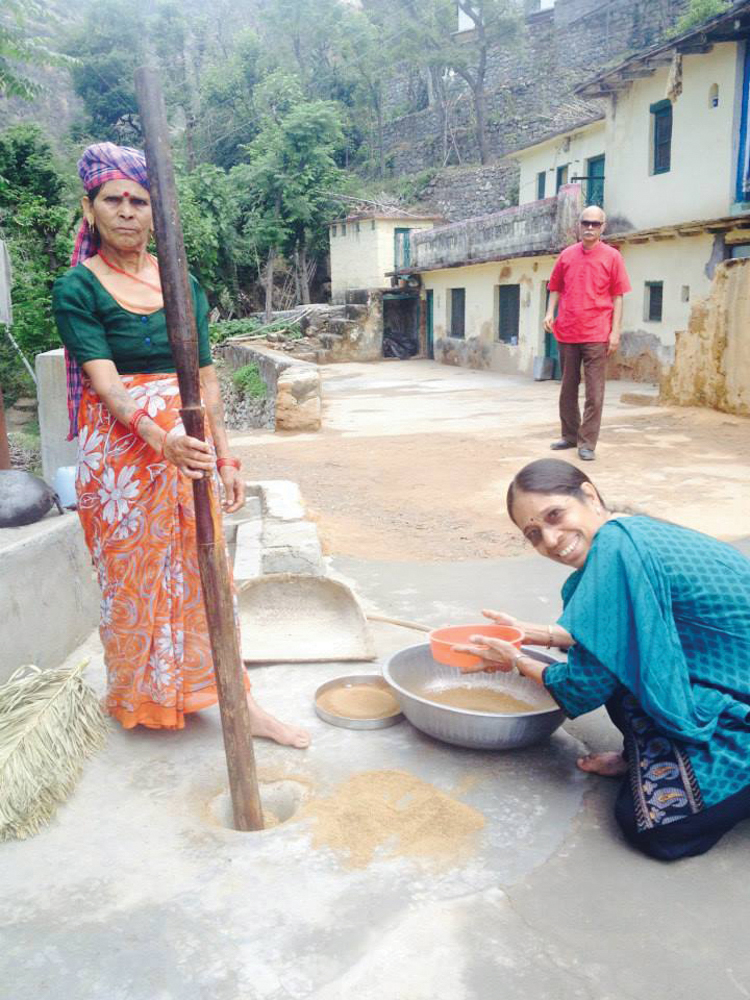
SaveAGram is a volunteer-run format. “We don’t pay anyone right now except the farmers. The income is only from the tourists in the homestays in Wayanad and Garhwal,” says Amala. She says that there is no support from the government for social enterprise in India, so it works to fund itself. “We also support schools in both locations. I want to look at the holistic development of each of the areas. At Wayanad is a tribal boarding school, while it is a day school at Garhwal. We are getting a sponsor for a child for one year and I want to raise that to a hundred sponsors. I don’t go about asking for donations, but instead ask people to sponsor a child or a teacher.”
How does SaveAGram differentiate itself from other community sustainable tourism? “Others do it for their own pockets; for me, the fundamental intention is to raise the community’s level of self-esteem and income. We are not contriving a situation; we are trying to retain an existing situation that is sustainable. There are standard tourist places that other companies list, that anybody can Google and find, but we give them real experiences, things which most people are unaware of and which you can get only if you stay with the local families. We encourage the tourists to teach in the local school – whether you’re an artist or a dancer. We also work with actual tribal guides who take you deep into the jungles, which you can’t otherwise access. It’s not your run of the mill tourist experience. We make it as authentic as possible.”
On the government’s role for the development of the villages, Amala says that it is “doing a lot of good things, but the problem is that once they start a project, there is no follow through. You have to check if the programme is working the way you meant it to; you cannot start a project just to win votes unless the project is self sustainable”.
Amala says that making the travellers sensitive, aware, and responsible is very crucial for SaveAGram. “We tell them that it’s not a contrived home – it’s a real home with real families who have their own routines and schedules. We suggest things that are ethnic and cultural to the area. We engage them in experiences and activities that are native to that place. We do not share the contacts and coordinates of the village as we want to identify only those travellers who are genuine, who really want to experience what we give, instead of just wanting to check them out. We filter the guests by letting them know the real conditions, such as the unavailability of an attached toilet and bathroom. Some guests give feedback that it was a great experience and they loved it, but ask for an attached bathroom to be built. But that’s something I shall never do. It is a cultural thing for the villagers – why should they feel bad that they don’t have an attached bathroom or toilet?”
Travel
Essential Summer Travel Bag Must-Haves

As the summer sun beckons, it’s time to dust off your travel bags and embark on exciting adventures. Whether you’re jetting off to exotic destinations or exploring hidden gems closer to home, packing the right essentials can make all the difference in ensuring a hassle-free and enjoyable journey. Join me as we explore the must-have items to pack in your travel bags for a memorable summer getaway.
Sun Protection Essentials:

Beat the heat and safeguard your skin from harmful UV rays with sun protection essentials. Don’t forget to pack sunscreen with a high SPF, sunglasses to shield your eyes, and a wide-brimmed hat for added protection. Additionally, lip balm with SPF and aloe vera gel can provide relief from sunburns and keep your lips hydrated.
Lightweight Clothing Options:

Embrace the spirit of summer with lightweight and breathable clothing options that keep you cool and comfortable on your travels. Pack versatile pieces such as cotton shirts, shorts, flowy dresses, and swimsuits for beach outings. Opt for wrinkle-resistant fabrics to minimize the need for ironing and save space in your luggage.
Hydration Essentials:

Stay hydrated on the go by packing a reusable water bottle in your travel bag. Fill it up whenever you have access to clean drinking water to quench your thirst and reduce plastic waste. Consider packing electrolyte packets or tablets to replenish lost minerals during outdoor activities or hot weather.
Travel-Friendly Toiletries:
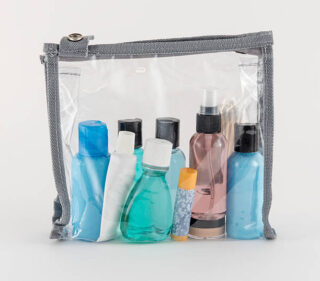
Travel toiletries in clear plastic, quart-sized bag on white background
Streamline your toiletry bag with travel-sized essentials that meet TSA regulations and save space in your luggage. Pack items such as shampoo, conditioner, body wash, toothpaste, and moisturizer in leak-proof containers. Don’t forget to include a compact travel towel and wet wipes for quick refreshment on the go.
Tech Gadgets and Accessories:

Capture unforgettable moments and stay connected with essential tech gadgets and accessories. Pack your smartphone, camera, or GoPro along with chargers, power banks, and adapters for international travel. Consider investing in a lightweight and portable Bluetooth speaker for impromptu beach parties or outdoor picnics.
First Aid Kit and Medications:

Home first aid kit on a blue background. The elements of the first aid kit are laid out on the table.
Be prepared for minor emergencies and health-related issues by packing a well-stocked first aid kit in your travel bag. Include items such as adhesive bandages, antiseptic wipes, pain relievers, antihistamines, and motion sickness tablets. Don’t forget to pack any prescription medications you may need during your trip.
With these essential items packed in your travel bag, you’re ready to embark on a summer adventure filled with unforgettable experiences and cherished memories. From sun protection essentials to tech gadgets and first aid supplies, being prepared for every situation ensures a smooth and enjoyable journey wherever your travels may take you. So, grab your bags, soak up the sun, and let the summer adventures begin!
Travel
Exploring Nature’s Splendor: The Best Waterfalls to Visit in Kerala
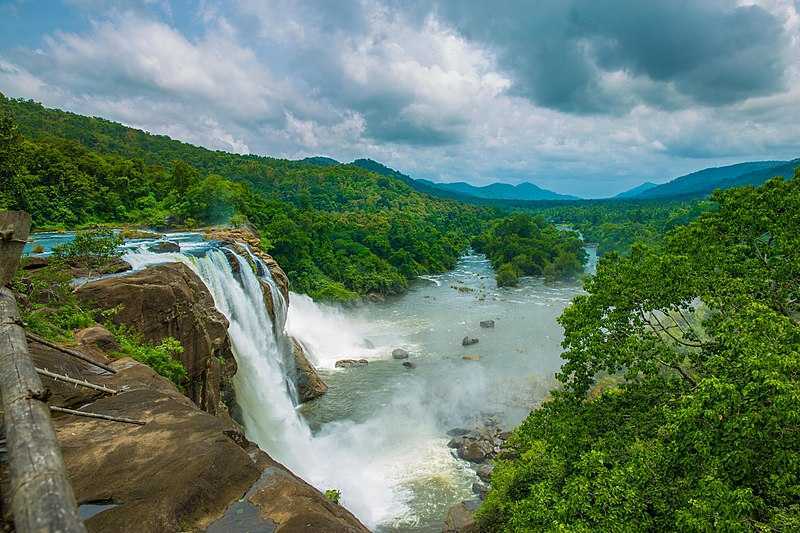
Nestled amidst lush greenery and pristine landscapes, Kerala, often referred to as “God’s Own Country,” is home to some of the most breathtaking waterfalls in India. From cascading torrents of water to serene natural pools, these majestic falls offer a refreshing escape into the heart of nature’s splendor. Join me as we journey through the best waterfalls to visit in Kerala, each offering its own unique charm and allure.
Athirappilly Waterfalls:
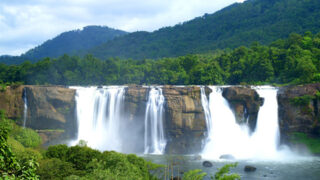
Located in the Thrissur district, Athirappilly Waterfalls is often dubbed as the “Niagara of India” for its impressive cascade and grandeur. Surrounded by dense tropical forests, the waterfall plunges from a height of approximately 80 feet, creating a mesmerizing spectacle of mist and spray. Visitors can enjoy scenic viewpoints, nature trails, and boat rides to witness the beauty of Athirappilly up close.
Meenmutty Waterfalls:
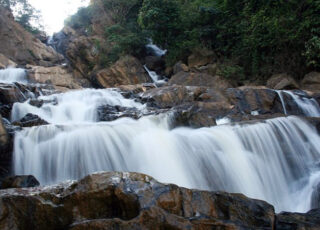
Tucked away in the Wayanad district, Meenmutty Waterfalls is a hidden gem nestled amidst the Western Ghats. With a three-tiered cascade plunging from a height of over 800 feet, Meenmutty is one of the tallest waterfalls in Kerala. Accessible via a trek through dense forests and rocky terrain, the journey to Meenmutty is as thrilling as the destination itself, offering panoramic views of the surrounding landscape.
Vazhachal Waterfalls:
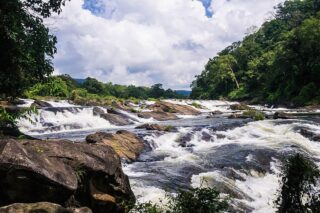
Just a stone’s throw away from Athirappilly, Vazhachal Waterfalls offers another enchanting spectacle of cascading waters amidst lush greenery. Fed by the Chalakudy River, Vazhachal descends gracefully over rocky terrain, creating a picturesque setting for nature enthusiasts and photographers alike. Visitors can explore nearby attractions such as the Vazhachal Forest Gardens and take a dip in the cool, refreshing waters.
Palaruvi Waterfalls:
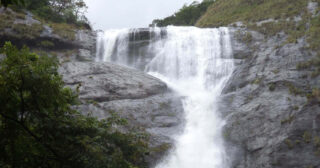
The name Palaruvi means “stream of milk” in Malayalam, and when you visit the falls, you’ll understand why. To get there, you’ll need to hike through the forest. There’s a tiny spot where you can swim and take in the cascade. You can combine a visit to the Shenduruny Wildlife Sanctuary with a tour to this idyllic setting. It is regarded as one of Kerala’s top waterfalls and is sure to add magic to your vacation.
Chethalayam Waterfalls:
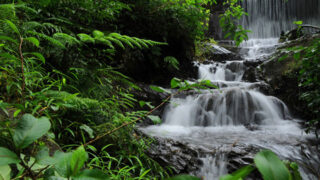
One of Kerala’s most well-known waterfalls, particularly for hikers and adventure seekers, is Chethalayam. To reach this picturesque waterfall from Kidangand, you would need to hike for around 4 km. Trekkers still favour it even though it dries out in the summer.
Soochipara Waterfalls:
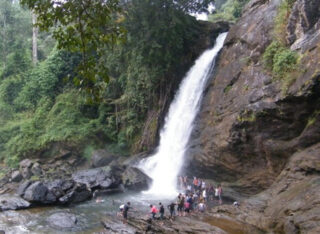
Situated near the town of Kalpetta in Wayanad, Soochipara Waterfalls, also known as Sentinel Rock Waterfalls, is renowned for its natural beauty and serene surroundings. Cascading down from a height of around 200 feet, the waterfall is nestled amidst dense forests and rocky cliffs, making it an ideal spot for trekking, rappelling, and swimming in the natural rock pools below.
Thusharagiri Waterfalls:
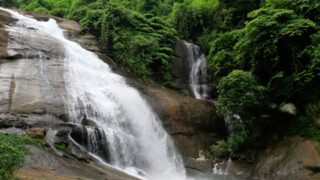
Tucked away in the Kozhikode district, Thusharagiri Waterfalls is a hidden gem waiting to be discovered by adventurous travelers. Comprising a series of cascades formed by the Chalippuzha River, Thusharagiri offers a serene retreat amidst verdant landscapes and lush greenery. Visitors can trek through the forested trails, indulge in bamboo rafting, and savor the tranquility of this off-the-beaten-path destination.
With their majestic beauty and serene surroundings, the waterfalls of Kerala offer a captivating escape into nature’s embrace. Whether you’re seeking adventure, tranquility, or simply a scenic retreat, these cascading wonders promise an unforgettable experience that will leave you enchanted and rejuvenated. So, pack your bags, lace up your boots, and embark on a journey to explore the best waterfalls Kerala has to offer.
Luxury
Expensive jewels owned by Nita Ambani

The Ambanis are renowned for leading “King”-sized lives, and any glimpse into their world instantly becomes viral on social media. They rank among the wealthiest families in the world, and their notable contributions across a wide range of industries are matched by their admirable sanskars and grounded demeanour. At every public event, the family never passes up the opportunity to showcase their elegance and charm. The Ambani family’s women are also the best at styling some of the most gorgeous ensembles and accessorising them with distinctive pieces. One of the nation’s pioneering ladies, Nita Ambani, is married to the biggest business magnate and possesses an enormous collection of ostentatious jewellery. Let’s examine the list of some of Nita Ambani’s most stunning jewelled pieces.
Diamond choker necklace with pearl drops

At the lavish wedding celebration for Sonam Kapoor and Anand Ahuja in 2018, Nita Ambani wore a necklace made of flawless diamonds. Nita wore an embroidered lehenga in a beige shade from the collection of Abu Jani and Sandeep Khosla, the designer partnership. She completed her ensemble with a choker made of pearl and diamonds, layered pearl necklace, and bold earrings.
Princess-cut diamond neckpiece

Nita Ambani was immaculate and lovely during her daughter Isha Ambani’s reception with Anand Piramal. She donned a baby pink chiffon saree that was profusely embroidered with buti work and cream-colored stones. She exuded elegance by pairing her outfit with a shirt embellished with intricate embroidery. All eyes were drawn to her princess-cut diamond neckpiece with cuboid-shaped diamonds and matching earrings, though. It was just too good to miss.
Jadau polki diamond jewelry set

On December 12, 2018, at Antilia, Isha Ambani’s mother Nita dressed simply like a queen. She chose a white lehenga by famous designers Abu Jani and Sandeep Khosla, which she accessorised with a dupatta, matching choli, and a red chadar with crystal embellishments tucked under her left shoulder. But her dazzling jewellery was what really made her look elegant. She wore a sleek nath, a maang teeka, bangles, a necklace, matching earrings, and a haath phool with jadau polki diamonds.
Polki Diamond Jewellery Set

During her daughter Isha Ambani’s wedding, Nita Ambani looked stunning in an ethnic outfit the colour of sunshine. Nita paired it with one of her statement pieces of jewellery, which included a sleek maang teeka, bangles, matching diamond drop earrings, and a polki diamond neckpiece exquisitely crafted with golden strings, to complete her look book.
Kundan set with gold-wired diamonds

A glance at Nita Ambani’s gorgeous ensembles with bold jewellery conveys a sense of royalty. During one of her public outings, she was observed displaying her elaborately designed jewellery to complement her traditional style. She chose a vivid orange lehenga choli and accessorized it with a haathphool, matching jhoomar earrings, and a gold-wired diamond kundan necklace that was fastened with two enormous pendants.
Two-tiered necklace made of diamonds and emerald stones

Nita Ambani wore a multicoloured choli with a bandhani lehenga at her son Akash Ambani’s wedding. She also chose to wear stunning diamond jewellery, which included a sleek nath, a maang teeka, matching earrings, and a two-tiered necklace set with emerald stones. The whole outfit she was wearing made her appear stunning.
Giant emeralds embellishment an uncut diamond necklace

With her poise and grace, Nita Ambani may easily outshine any Bollywood diva in terms of style statements. The wealthiest business tycoon’s wife possesses some unusual diamond jewels. During one such occasion, she was observed wearing a distinctive necklace set with enormous emeralds and uncut diamonds. She looked stunning when she wore her neckpiece with matching earrings, a large ring, and flower-shaped diamond bangles.
Saat Nori diamond necklace

Nita wore an orange silk saree and beautifully matched it with diamond jewels for Radhika Merchant’s Arangetram programme. She was undoubtedly one of the most beautiful women of that era. Nita’s jewellery choices included a large locket and a diamond Saat Nori Haar with pearl tiers, matching flowery jhumkas connected by diamond long chains, a massive heart-shaped ring, and diamond bangles.
-

 Entertainment3 months ago
Entertainment3 months agoThe Stunning looks from Bhagya Suresh’s Wedding
-

 Fashion3 months ago
Fashion3 months agoMost Discussed Ajrakh Saree of Alia Bhatt
-

 Entertainment3 months ago
Entertainment3 months agoThe Most Stylish Guests of Bhagya Suresh Reception
-

 Entertainment4 months ago
Entertainment4 months agoEverything about the Ira Khan wedding that is out of the norm
-

 Entertainment3 months ago
Entertainment3 months agoBridal Bliss : All Bridal Looks of Swasika Vijay
-
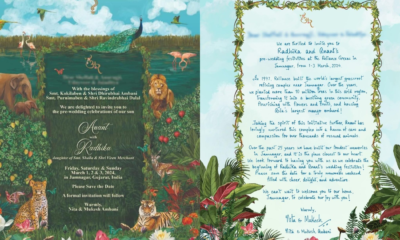
 Entertainment3 months ago
Entertainment3 months agoAll About The Dreamy Pre Wedding Invite Of Anant Ambani & Radhika Merchant
-

 Fashion3 months ago
Fashion3 months agoMajor Denim Trends You Need To Know in 2024
-

 Entertainment4 months ago
Entertainment4 months agoBest Looks from Golden Globes 2024


